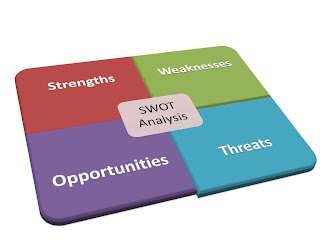1. In
your own words and using referenced quotes describe what is meant in strategy
by ‘organizational purpose’ and describe what is meant by ‘corporate social
responsibility’.
The main purpose of every organization is to meet their pre determined mission, vision, goal and objective. They exist and operate to get their purpose and it will be possible through strategies. Every organization bear common purpose of making maximum profit, customer satisfaction, increasing the market share and increasing shareholder’ value. But this purpose are break down in long term and short term objective of the organization.
World
famous McDonald’s has its organizational purpose as being the best by “providing
outstanding quality, service, cleanliness, and value, so that we make every
customer in every restaurant smile."
Corporate Social Responsibility is the continuing commitment by business to behave ethically and contribute to economic development while improving the quality of life of the workforce and their families as well as of the local community and society at large. (
Corporate Social Responsibility is the continuing commitment by business to behave ethically and contribute to economic development while improving the quality of life of the workforce and their families as well as of the local community and society at large. (
The European model is much more focused on operating
the core business in a socially responsible way, complemented by investment in
communities for solid business case reasons. Personally, I believe this model
is more sustainable because:
1. Social
responsibility becomes an integral part of the wealth creation process - which
if managed properly should enhance the competitiveness of business and maximise
the value of wealth creation to society.
2. When
times get hard, there is the incentive to practice CSR more and better - if it
is a philanphropic exercise which is peripheral to the main business, it will
always be the first thing to go when push comes to shove.
2. Should organizations
focus more on profit and shareholder satisfaction or responsibility and
stakeholder satisfaction? Discuss your own thoughts but try to support your ideas
with theories or examples.
Stakeholders are people or groups that
are most likely to get affected by an organization and vice versa. This group
comprises of customers, government, society, government, employees and
employees. It is through their co-operation and coordination that an
organization's success depends and without them being satisfied, it will be
very hard for an organization to perform well. There is no doubt that
organizations operate for profits and to satisfy shareholders. But what is most
important for an organization in long term is goodwill and credibility and
the two ways of gaining these are undertaking corporate social responsibility
and satisfying the stakeholders. There also other benefits that come with these
such as good reputation, access to capital and resources, reduction in costs
and so on. Thus, organizations should focus more on responsibility and
stakeholder satisfaction rather than profit and only shareholder satisfaction.
For instance, Pepsi
Co an American Multinational Corporation that manufactures and supplies food
and beverages donated $20m to a project named Refresh Project that helped
orphans. In the same way, Chaudhary Groups a renowned FMCG company in Nepal
organizes various sponsorship and scholarship programs for the welfare of the
society. Though, one of the major objectives of these companies is to earn
money, they are also working towards bringing social reforms in the society.
They are socially responsible and have been conducting corporate social
responsibilities in the form of various activities, projects and programs. This
has helped gain these organizations goodwill and credibility from the customers
and stakeholders which in result has helped them better their performance and
stand out from the crowd.
3.Write
about experience with today's case study? What answers did you give to the
questions? What did you think of the CEO?
The case study was not just an academic work for me but also a good source of information about PepsiCo, its products and strategies as I didn’t know much about the company. The only products I knew that belonged to PepsiCo are Pepsi and lays but now I know that there are many other products and product lines of PepsiCo and I will definitely try some of them.
The case study was not just an academic work for me but also a good source of information about PepsiCo, its products and strategies as I didn’t know much about the company. The only products I knew that belonged to PepsiCo are Pepsi and lays but now I know that there are many other products and product lines of PepsiCo and I will definitely try some of them.
Talking about the CEO Indra Noovi, is
an inspiring lady. She has proved us that even a woman can work well and be a
top professional in her field. She has managed to well handle this big and
reputed multinational corporation. In addition, she is also working for making
the corporation a corporate citizen and she is doing this by offering healthy
foods and drinks to the customers as well as sponsoring and donating huge
amount of money to programs and projects. Indeed, she is a woman who is kind,
generous, smart and confident.
REFERENCES
1. Corporate
Social Responsibility<online> Available
at<http://www.investopedia.com> Accessed on [10/01/13]
2. Governance
and ethics<online> Available at <http://csr.cisco.com/>
Accessed on [09/01/13]
3.TakingITGlobal; Corporate social responsibility. <online> Available at < http://issues.tigweb.org/csr?gclid=CKmLvav4zrUCFct56wodjnYAng > [Accessed on 07/01/13].
3.TakingITGlobal; Corporate social responsibility. <online> Available at < http://issues.tigweb.org/csr?gclid=CKmLvav4zrUCFct56wodjnYAng > [Accessed on 07/01/13].
4. Corporate Social Responsibility <online> Available athttp://www.businessdictionary.com/definition/corporate-social-responsibility.html [Accessed on 09/01/2012]
.jpg)






.jpg)